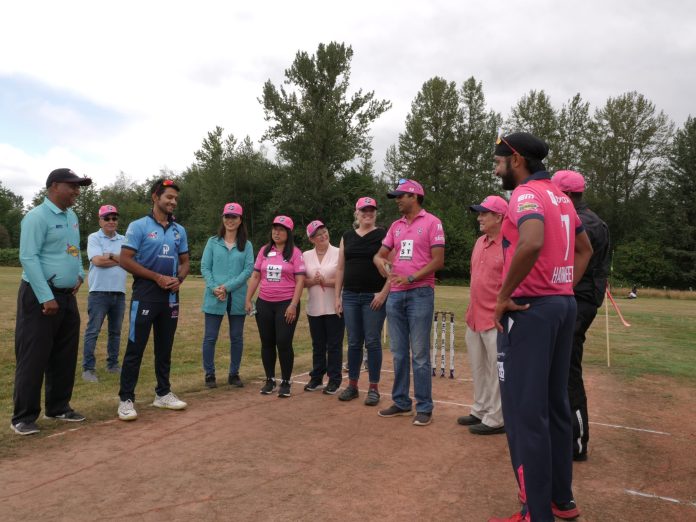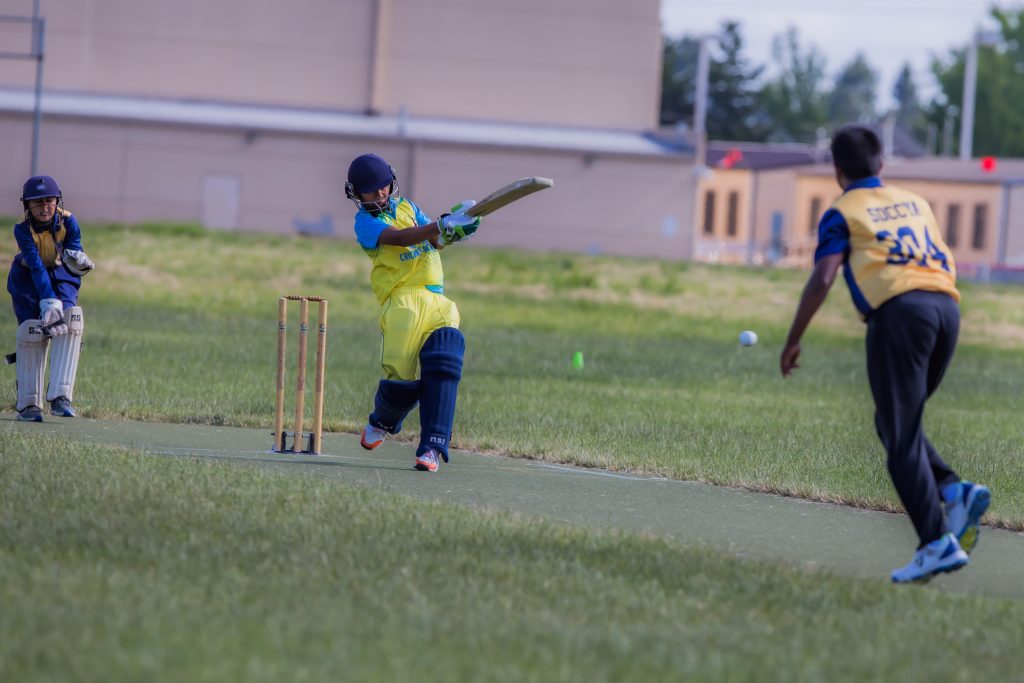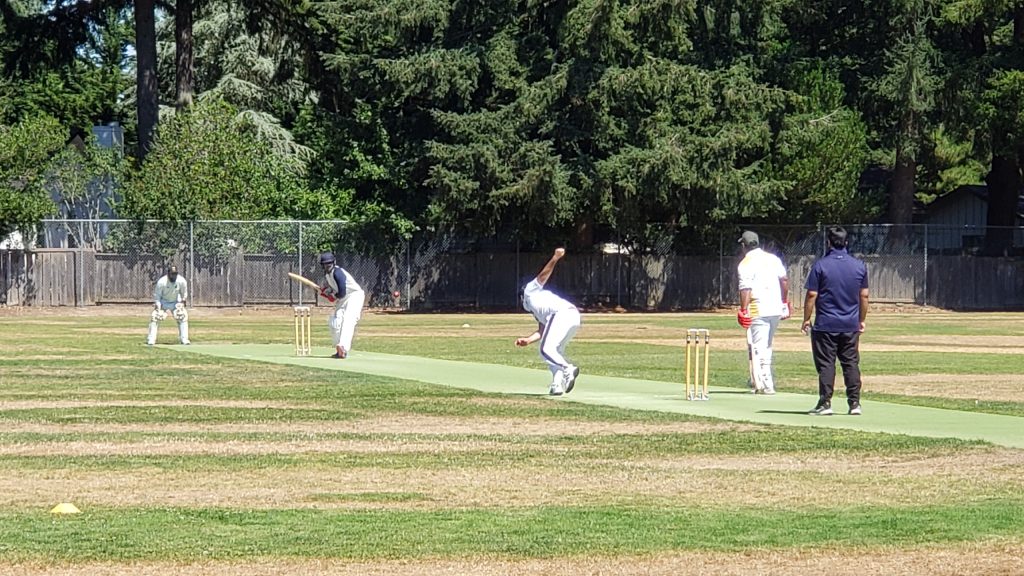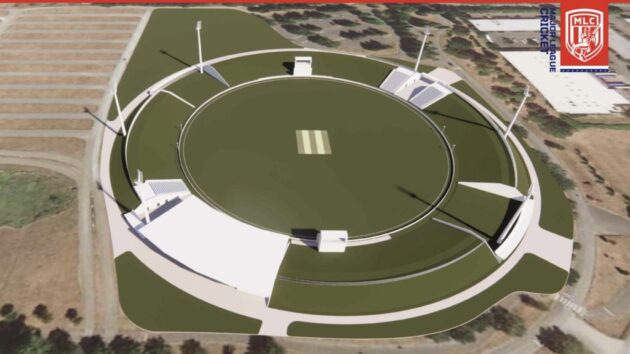Move aside pickleball, it’s time to give another rapidly growing sport in the Puget Sound the limelight. “Cricket has seen an exponential growth in our region,” longtime Bellevue resident Yatin Aras said during an interview with The Urbanist. “The number of cricket teams has grown from six when I played here in the 90s to over 200 teams today across amateur, recreational, and youth leagues.”
This translates to over 3,100 active and organized players in the region, with many more cricketers playing casually and/or unorganized. Growth in the sport is perhaps most pronounced in the youth circuit. “There were no organized youth teams for my sons to play on in 2010. Now there are four youth academies on the eastside with 18 teams,” Aras said.
The expansion of cricket is not just happening for men and boys, but also women and girls teams. There are six womens teams organized in the recreational leagues with a strong pipeline forming with many girls participating in youth leagues and academies. Jivana Aras, Yatin’s daughter, has excelled in the sport, competed on the US’s Under 19 women’s cricket team, and currently plays in the National Women Cricket League.
Despite cricket’s regional rise, Yatin Aras was quick to mention the limited infrastructure to support the cricket community as resulting in “growth [being] severely constrained by the lack of facilities.” Cricket is popular activity in the flourishing South Asian/Desi community of Seattle and the Eastside, thus in the Puget Sound, cricket is an evident parks and racial equity issue.
This dynamic should be a major consideration as some of the largest cities in King County are considering parks levy renewal. Major population centers for the South Asian community like Bellevue and Kirkland are currently working toward new parks levies. A golden goose for parks dollars, Seattle is considering a doubling of their parks levy to $108 million. To keep up with the pace of the cricketing community’s growth, parks levy dollars must follow and flow.
What’s cricket anyways?
Cricket is a bat-and-ball game. If you are new to the game, you can learn more about its rules from the YouTube video below.
Cricket is typically played on an oval field. International Cricket Council standards call for fields with boundaries between 65 and 90 yards from the center of the pitch, so typically over 20,000 square yards in area. Smaller fields, which exist in the region, may range between 11,000 and 13,000 square yards. For comparison, a soccer/football field is somewhere around 12,000 square yards. Depending on the type of cricket, these games last five days, a full day (7 hours), or a half day (3 and a half hours). Typically, full day cricket is played.
Puget Sound’s cricketing community
The sport is predominantly played by commonwealth countries, mostly Britain and past and current territories. Based on a combination of immigration and other demographic dynamics, the Puget Sound’s cricketing community is primarily Indian/Indian American, but other commonwealth nationalities like Australians, other South Asians, and West Indians/Caribbean are represented as well. Those same immigration dynamics are also fueling the growth and importance of youth cricket leagues.
As our immigration system favors skilled workers and Puget Sound’s professional populace has recently boomed, the population of immigrant children and American-born children of migrants from commonwealth countries is relatively new and burgeoning. Building out Puget Sound’s cricket infrastructure is perhaps most critical for this population of youth and their families looking to continue their cultural pastime in their new homes. Not providing them with appropriate cricket facilities would be especially impactful to immigrant children whose social capital and passion is tied up with cricket.
In general, the population of Indian/Indian Americans is expanding quickly in the Puget Sound region. Lumped into the 2020 census with other “Asian” Americans, the Asian American population jumped nearly 50% between 2010 and 2020. This figure was an astonishing 80% for eastside cities, such as Bellevue, Kirkland, Redmond, and Sammamish. Kent, and south Snohomish County also saw a major increase.
Now five-year-old data from the 2017 American Community Survey, which breaks down Asian American to a more national level, found major concentrations of Indian/Indian Americans throughout. These populations are especially great in the Eastside with some census tracts having over 30% or even almost 50% of the population be “Asian Indian.” These numbers are likely even greater today with tens of thousands of Desi, or people from the Indian subcontinent counties of India, Pakistan, and Bangladesh living in the Puget Sound, at least.
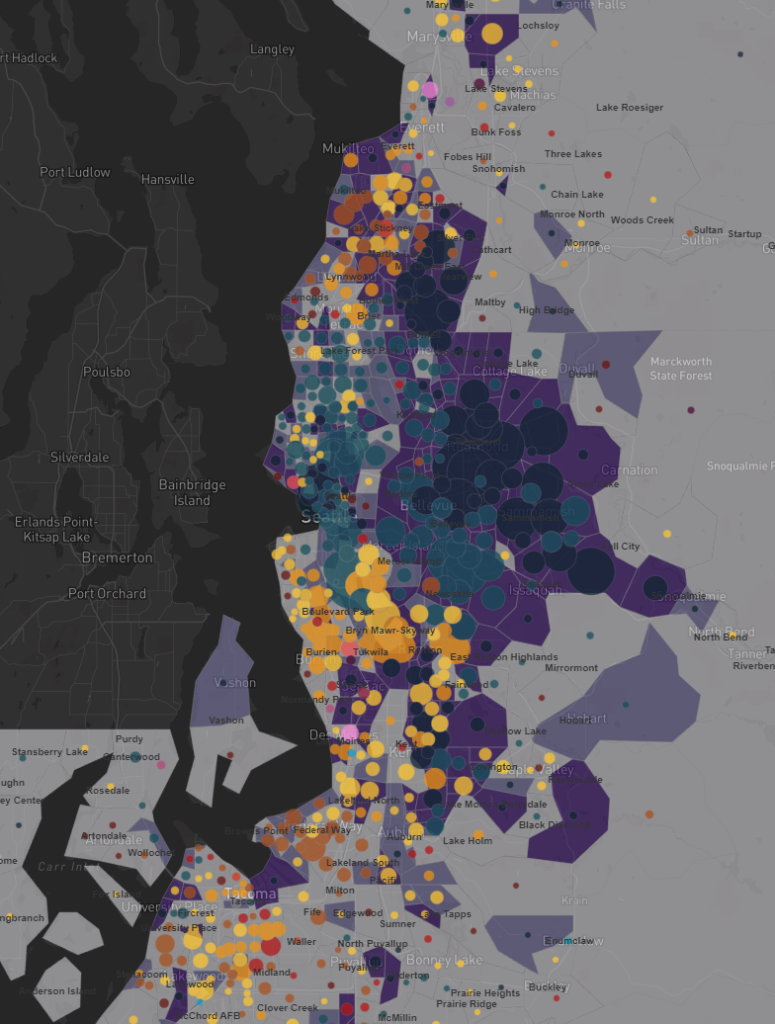
Local cricketers have organized themselves into four leagues. This includes the Seattle Thunderbolts, our local professional team and a professional youth team. A tier below is the amateur league with four divisions, 44 teams, and over 903 registered players. The recreational league is more than twice as big as the amateur league and then there’s the youth league. Further growth is limited by the number of facilities in the region.
Some activity has occurred around the construction of cricket facilities in the Puget Sound. In North Bend’s Tollgate Farm Park, six turf fields recently opened. In 2020, a state-of-the-art facility opened in Bellevue. Recently, the King County Council passed a motion to support construction of a Major League Cricket grounds to replace the facility at Marymoor Park. Of course, not all cricket infrastructure news is evergreen, the North Robinswood Park’s cricket field in Bellevue will be lost to the construction of the Bellevue Big Picture School. The field that Aras played on in the 90s was also lost. Historically, cricket fields were replaced or lost, rarely added. Oftentimes our local cricket community has to use temporary solutions with moveable pitches on fields for other sports. It’s about time Puget Sound cities made significant public investment in this community.
Let’s Fund Cricket
As Bellevue, Kirkland, and Seattle contemplate future park levies, supporting cricket should be a pronounced priority. The growing population of cricket players and the communities they come from should make this need for investment necessary and pragmatic. Especially for cities that are not Seattle, passage for parks funding is not guaranteed at the ballot box. Savvy city governments should activate the vote of a growing Indian population and other cricketing communities to help their parks levies pass.
It’s also just good urbanism to create spaces for all members of your locality. Investing in cricket demonstrates cultural competency to immigrant communities from commonwealth countries. Moreover, these kinds of investments are fun and exciting. They can produce professional cricketers like Jivana.
“With the possible introduction of cricket in the 2028 Olympics in LA, we know this second most watched sport in the world is only going to get more popular in the coming years,” Yatin Aras said.
Why not jump on the bandwagon and send some of our own to cricket competitors across the world?
If you want cricket funded and sent to the ballot, let your local elected and city governments know. Yatin and Jivana Aras both spoke at a Bellevue council meeting. Be like the Aras family if you want to support cricket, email your city council members, take city surveys, testify at city council meetings, and generally just engage with local government.
Shaun Kuo is a junior editor at The Urbanist and a recent graduate from the UW Tacoma Master of Arts in Community Planning. He is a urban planner at the Puget Sound Regional Council and a Seattle native that has lived in Wallingford, Northgate, and Lake Forest Park. He enjoys exploring the city by bus and foot.


